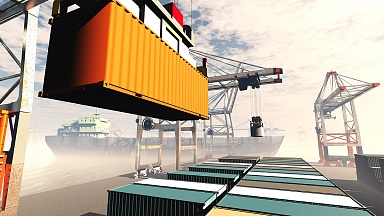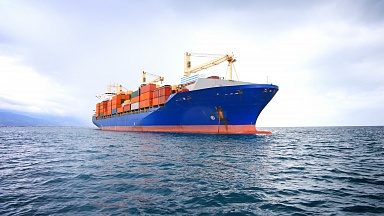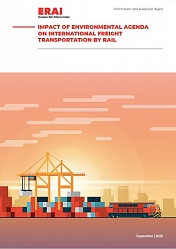‘Never before in the history of the Federal Republic was rail transport so important as today’. Praising rail’s performance and achievements during the Covid-19 pandemic, Federal Minister for Transport & Digital Infrastructure Andreas Scheuer said ‘we have seen how important and reliable rail is, with robust passenger services and uninterrupted carriage of freight’.
In his Foreword to the coalition government’s Master Plan for Rail, published at a ‘Rail Summit’ in Berlin on June 30, Scheuer went on to assert that ‘we will do all we can to make sure that the rail sector comes successfully through the pandemic situation and goes strengthened into the future ... We have a clear plan for the railway and for rail transport in Germany’.
On the face of it, the Master Plan represents an unprecedented government commitment to the rail mode. The planning process began in October 2018 when Scheuer unveiled details of the Zukunftsbündnis Schiene (Future Alliance Rail). This was a body set up to bring together organisations from politics, commerce and the rail sector with the aim of developing proposals and strategies that could be incorporated in the Master Plan.
Climate change strategy
The coalition government had identified rail as a central element in its strategy for meeting climate change goals, and as part of Zukunftsbündnis Schiene six taskforces were set up to formulate proposals under a 28-strong steering group led by Parliamentary State Secretary Enak Ferlemann. Each taskforce was assigned a specific area: the introduction of regular-interval services (Deutschlandtakt) to achieve better punctuality; expansion of capacity to ensure reliability; making rail competitive; noise and environmental issues; promotion of innovative technology; and staffing in the rail sector — forecasts suggest that up to 100 000 new personnel will be needed by DB AG alone over the coming years.
According to Scheuer, this was the first time that such an all-embracing platform had been set up to formulate railway strategy anywhere in Europe.
The steering group produced an interim report in May 2019. It followed this in October 2019 with a list of measures for immediate action, which the government then incorporated into its policy as commitments to the rail sector. Some of these are already in progress or have been agreed or implemented, while others remain aspirations and are not yet funded.
Ambitious objectives
The Master Plan has two primary objectives. First is to double the volume of passenger traffic by 2030 and second is to increase rail’s share of the freight market from the current 19% to at least 25% by the same date.
Switching freight from road to rail forms a ‘key element’ in the proposals for combatting climate change within the transport sector. Traffic, both freight and passenger, will only switch, the government believes, if network capacity is increased, with matching increases in rolling stock provision and staffing, accompanied by measures to make rail more attractive to its customers.
Taktfahrplan
The most ambitious proposal in the Master Plan is Deutschlandtakt, a national regular-interval timetable. This would see half-hourly inter-city services on the principal corridors connecting major cities, and hourly services on less important inter-city routes; frequent regional and local services would be tailored to offer good connections in and out of long-distance services across the network.
As happened with the introduction of the Swiss Taktfahrplan as long ago as May 1982 and its evolution into Switzerland’s Bahn 2000 programme, this represents a fundamental change of policy. Whereas previously the timetable was formulated to suit the infrastructure, the timetable requirement would now dictate what infrastructure needs to be made available.
Taking the Swiss Taktfahrplan as his model, Ferlemann saw the potential of Deutschlandtakt back in the 2000s. Acknowledging that the Swiss network was about the same size as that in the Land of Hessen, he recognised that the task of introducing connecting regular-interval services across the whole of Germany would be much more complex and demanding.
The slogan chosen to promote Deutschlandtakt is Öfter, Schneller, Überall. (more frequent, faster, everywhere.). Yet it is quite clear that achieving these objectives will be neither cheap nor quick. Adapting the network to handle many more services will require a huge programme of infrastructure upgrading and some new line construction, suggesting that many years will elapse before the full Deutschlandtakt concept becomes reality.
Ferlemann’s proposals were met initially with a lot of scepticism, especially from train operators — ‘it was as if I was a lone voice in the wilderness’, he recalls. But persistence eventually paid off, and over time Ferlemann succeeded in convincing much of Germany’s rail sector that the idea offered considerable merit. He now claims that ‘everyone supports the system’.
As proof that travellers will use rail if the service is good enough, Ferlemann cites the success of the Berlin — München route following completion of the new Erfurt — Ebensfeld line in December 2017; this was the final stage in a project that was launched in 1991. The trip between the federal capital and the Land capital of Bayern was cut to under 4 h by the fastest Sprinter services, and forecasts of extra traffic turned out to be quite conservative compared to what actually happened — inter-city traffic on the route more than doubled within the first year.
The ministry team leading the Deutschlandtakt concept is certainly not short of ambition — Scheuer has already talked about extending regular-interval services to other countries, mentioning a Europatakt and ‘trans-European express’ services. This was a vision and not a fantasy, he told Die Welt.

Priority projects
The need for extra capacity applies to many other routes, and timely completion of major and minor enhancement projects will inevitably set the timescale for the different phases of Deutschlandtakt.
The government has identified 12 major priority projects, which are deemed essential (Table I). These are to be completed ‘as quickly as possible’, which will require a guaranteed flow of funds. The proposed availability of funding to cover the different projects over the next 20 years is shown in Fig 1. Note that the Karlsruhe — Basel project, which has already been in progress for three decades, is expected to require ongoing funding until 2040.
The government is urging budget legislators to make the money available to a timetable that matches the progress of the various projects through the planning legislation, with at least €3bn a year being required in the medium term. The Master Plan notes that ‘all players must work together’; one recommendation is that a dedicated fund should be established.
Another requirement is for legislation covering the long-distance freight network (Schienengüterverkehrs-netzförderungsgesetz) to be modified to cover infrastructure work on the territory of non-federal railway companies — around 50% of Germany’s freight traffic is now handled by companies other than federally owned operator DB Cargo.
In addition to the major capacity enhancement projects, the government envisages making funds available for small and medium-sized schemes. Work has already begun on a ‘starting portfolio’ of projects that includes ‘service facilities’ as well as infrastructure; these are to be given priority as they can be implemented faster and more easily than major schemes. Such projects will help to ensure ‘operational stability’, with implementation envisaged over the next five to eight years.
Going digital
Digitalisation is identified as another area for action, and the Master Plan cites the capacity benefits of shorter signalling blocks which ‘can be achieved more easily and cost-effectively’ with ETCS than with conventional signalling. Combined with digital control centres, ETCS will form the ‘technology platform’ for Digitale Schiene Deutschland (Digital Railway Germany).
DSD is seen as another piece in the Deutschlandtakt jigsaw, with a rollout of digital train control technology required to match the various phases of the timetable upgrade. Preparations are currently in hand for financial agreements needed to bankroll a ‘starter package’ of DSD projects. The programme anticipates that €28bn will be required for ETCS infrastructure work and a further €4bn for equipping rolling stock.
Acceptability
There is recognition in the Plan that completion of major projects requires a speedier planning process. It also recognises that this can only be achieved if the need for major works is better accepted by the local population in the affected areas.
To foster social acceptance for railway schemes, the government envisages that regional bodies should be set up with members drawn from politics, commerce and local organisations. These bodies would be tasked with communicating the benefits of rail projects to the public, in order to establish a dialogue at local level.
Competition questions
The Master Plan acknowledges the need to make rail more competitive against other modes. It also recognises that intramodal competition can stimulate improvements in quality of service, noting that poor performance in terms of punctuality and reliability in recent years has damaged the railway’s image.
The need for fair allocation of paths and equitable access charging is set out in the Plan. Balancing this with other requirements such as having long-term planning certainty is acknowledged, but there is also acceptance that short-term changes may be needed to cope with spot contracts in the freight market. Arranging pathing and path pricing to fit the national timetable structure as well as respecting competition and access principles under EU regulations will be required, and an iterative process is envisaged as Deutschlandtakt is rolled out.
This would appear to represent one of the biggest challenges, as it is not clear how private or open access operators will be treated as regular-interval services are stepped up. Germany’s independent operators’ association Mofair has already flagged up the need for neutral allocation of paths, and criticism has been levelled at Scheuer for announcing the launch of intensive regular-interval services between Hamburg and Berlin with the next timetable change in December without an adequate answer to this question.
Finding a formula will almost certainly beg further questions, for example about inter-availability of tickets and commercial policy.
Critics point out that significant infrastructure work will be needed between Hamburg and Berlin before additional services can be accommodated, and there are fears that freight trains will be delayed if priority is accorded to the more frequent passenger services. One requirement is the adaptation of track and signalling to cope with ICE trains using eddy-current brakes.
Noise and pollution
The Plan reports that rail generates just 0∙6% of greenhouse emissions from the transport sector compared with 60∙6% for private cars and 35∙6% for lorries and buses. It is therefore the only mode, the Plan says, that can be made climate neutral within the near future. As part of the government’s decarbonisation policy, rail is urged to increase its use of renewable energy sources and to minimise consumption.
Another goal is to ensure that noise emissions do not increase as more traffic is attracted to rail. Huge progress has already been made thanks to refitting of wagons with composite brake blocks — by the end of April 88% of the 183,000 strong wagon fleet used in Germany had been retrofitted or equipped from new with quieter brakes. Problems remain, however, particularly on busy routes at night.
From this year’s December timetable change, noisy freight wagons will, in theory at least, be banned from the German network. From December 2024 they will also be prohibited across the EU from so-called ‘quieter routes’, meaning those with more than 12 trains a night.
Disturbance caused by the use of automated warning systems while engineering work is in progress is also seen as a sensitive issue that needs addressing.
Research and innovation
The government considers that research activities in the rail sector have not been sufficiently geared to actual requirements, while some technologies have proved too expensive for market take-up. Hence the Master Plan calls for fresh impetus from both the state and the rail sector, leading to Germany becoming ‘the world’s leading market for research and application in rail transport’. This would also strengthen the domestic railway supply industry, it suggests.
A start was made in May 2019 when the German Centre for Railway Research was established in Dresden under the aegis of the Federal Railway Office. In the long term this is intended to become ‘a platform for co-operation with commerce and science’. Departments have been set up to mirror the federal railway research programme, with the focus on efficiency, the environment and safety; digitalisation and automation will apply across the board, in parallel with policies covering legal issues and migration from experimentation to practice.
A test site for exploring automation technologies is to be established in the Lausitz area in eastern Germany, and a study due to be finished by the end of this year will set out how this might be done. Driverless operations using all types of traction and different signalling and train control systems will be examined, and the site will also be used as a train noise laboratory.
Finding the right people
The number of people employed in Germany’s rail businesses grew from 241,475 in 2015 to 262,608 in 2018. Of these, 44% are employed by train operators, with about 36% active in infrastructure and trackwork. The other 20% work for suppliers and manufacturers. In all, there are around 500 different job types across the sector, which directly and indirectly employs 640000 people.
If the vision of growth outlined in the Master Plan is to become reality, the rail sector will need to recruit many more employees. Even with digitalisation, the number of railway staff needed is forecast to rise by 50% by 2030, making it essential to attract people into the sector, especially women. Infrastructure contractors alone reckon with a need for 15,000 more staff by 2024.
How to achieve this is a major question, not least because — as the Plan notes — the sector has a poor image. On the other hand, it cites a recent survey which placed the job of train driver within the top five careers, along with airline pilots and doctors.
The government believes that its investment programme will have ‘an enormous effect’ on employment in the railway sector. Traditional jobs such as shunters and crossing-keepers will vanish, to be replaced by a requirement for new skills. New jobs that may appeal to young people are likely to include drone pilots and big data analysts. There will also be high demand for IT and communications expertise.
In rethinking the role of railway staff, the Plan suggests, railway organisations must take more account of ‘soft’ factors such as work-life balance and the trends towards home office, part-time and mobile working.
During 2019 and before Covid-19 arrived, a shortage of train drivers was already plaguing the industry. About 31,000 drivers were active on the national network, and a further 16,000 drive U-Bahn trains and trams, but the age profile remains high and many are approaching retirement.
Freight Master Plan
The previous federal government published a Master Plan for Rail Freight in June 2017. This has now been incorporated into the overall Master Plan, which includes the 66 measures agreed in 2017 and five short-term measures that have already been implemented or are in progress. These include a reduction in access charges, works to accommodate 740 m long trains across the core network, and the launch of a test site for automated train formation at München Nord yard.
The need to attract high-value freight to rail is also accepted, with a suggestion that this could bear higher margins which could be used to fund improvements. A virtuous cycle is envisaged, whereby the introduction of improvements to make rail more attractive would generate increased revenues that could be reinvested in further enhancements.
Of the 66 longer-term measures, some are already in progress. These include development of the ‘digital automatic coupling’, including the launch of a demonstrator train; initial trials began in July.
Annual ‘Day of Rail’
In order to encourage support for these ambitious proposals, the Ministry of Transport & Digital Infrastructure intends to launch an annual event termed Tag der Eisenbahn (Day of Rail), starting in 2021. The main event will be a conference about the future of rail that will involve all stakeholders. Apart from being a regular opportunity for the sector to exchange experience and best practice, it will allow progress with the various Master Plan developments to be tracked and monitored.




